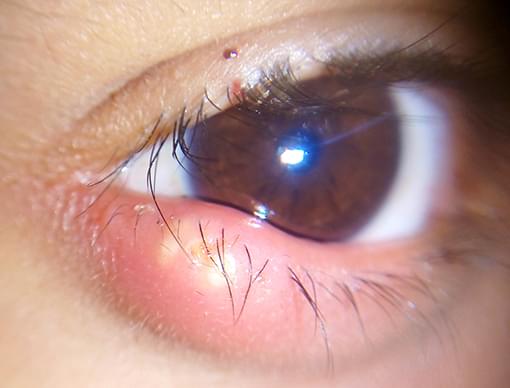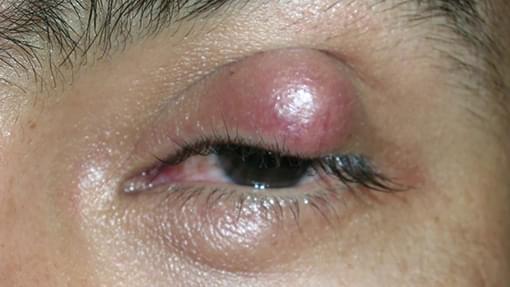Stye
What is stye?
The stye is one of the most common problems that can affect the eyes.
Stye is an acute inflammation of the eyelid glands. It can be external and internal. The difference is that external stye is a purulent inflammation that affects the hair follicle of the eyelid and the sebaceous gland around it. The external formation is located at the edge of the eyelid engaging the skin. The internal stye is also an acute purulent inflammation, but it grows deeper into the eyelid and is located closer to the eyeball, i.e. inward.
Styes can appear in people of all ages, they can affect only one of the eyes, or they can spread to both eyes at the same time. It is possible to have only one, but often several styes appear one after another at approximately the same time.
If the stye is not treated properly, it may become chronic. Once the acute stage has passed, a small painless bum may remain, but it is filled with secretion, which may necessitate surgical treatment.

Causes
Styes are most often caused by different bacteria. Some people are more prone to it. People who have blepharitis, i.e. inflammation of the edges of the eyelids, often develop styes. In conjunctivitis, there is also a risk of stye growth. Conjunctivitis is an inflammation of the lining that covers the back of the eyelids and the front of the eyeball reaching the cornea.
Another cause of stye are irritating factors from our everyday life - strong and/ or artificial light, night work, many hours in front of the computer, dust, smoke, etc. In the ladies stronger makeup can also be a cause of inflammation.
One of the leading causes of styes is an uncorrected eye problem. In patients who need glasses, but do not wear them or have been prescribed incorrect dioptres. When the patients do not see well they squint their eyes, and such a tension predisposes inflammation.
Diabetes could also causes growth of styes. In patients with chronic styes, when all other causes are excluded, the blood sugar levels must be checked. When the blood sugar is high, the human body is very susceptible to inflammations, including of the eyelids.
Symptoms
The stye first appears as a red bump close to the edge of the eyelid, in the case of external stye, and deeper inside the eyelid in the internal. It is usually not very big in size, however, the eyelid could be swollen and the surrounding skin could be red and painful on touch.
In more severe cases, the condition could be associated with swelling of the lymph nodes near the ears. Sometimes the stye can spontaneously rupture, and the pus that is collected in it can leak out. It is very important for the patients not to try to squeeze out the pus – the infection can spread to the surrounding tissues – both of the eye and of the face.
There are different eyelid conditions that may occur with similar symptoms. If a person experiences discomfort, they should visit an ophthalmologist to identify the causes and to treat them adequately. It is possible that behind the symptoms is hidden a diagnosis that requires a different treatment. Even tumors can be masked as styes, therefore the condition must not be underestimated.
Treatment
In the acute stages the stye is treated mostly with antibiotic drops and ointments. Different warm procedures are also used to scatter the secretion. The proper and timely treatment leads to complete cure without any scars and/ or consequences.
In modern times phototherapy (photobiomodulation) is used as non-operative treatment for stye. It shows especially good results in the early stages of the disease. While in the acute stage of the disease only 2 procedures are sufficient, in the chronic phase the whole course of treatment of 4 procedures is required. The photobiomodulation for a chronic stye might not lead to full recovery but it will decrease the size of the "lump" and will improve the aesthetic look of the eyelids.
If the stye is not treated adequately and in good time, it can become chronic, and then the only definitive way to treat it is surgical. During the procedure the accumulated secretion is surgically evacuated with subsequent thorough disinfection of the area. It is done with local anesthesia for about 15-30 minutes. In the postoperative period, antibiotic drops should be applied as prescribed, and high personal hygiene must be maintained.
